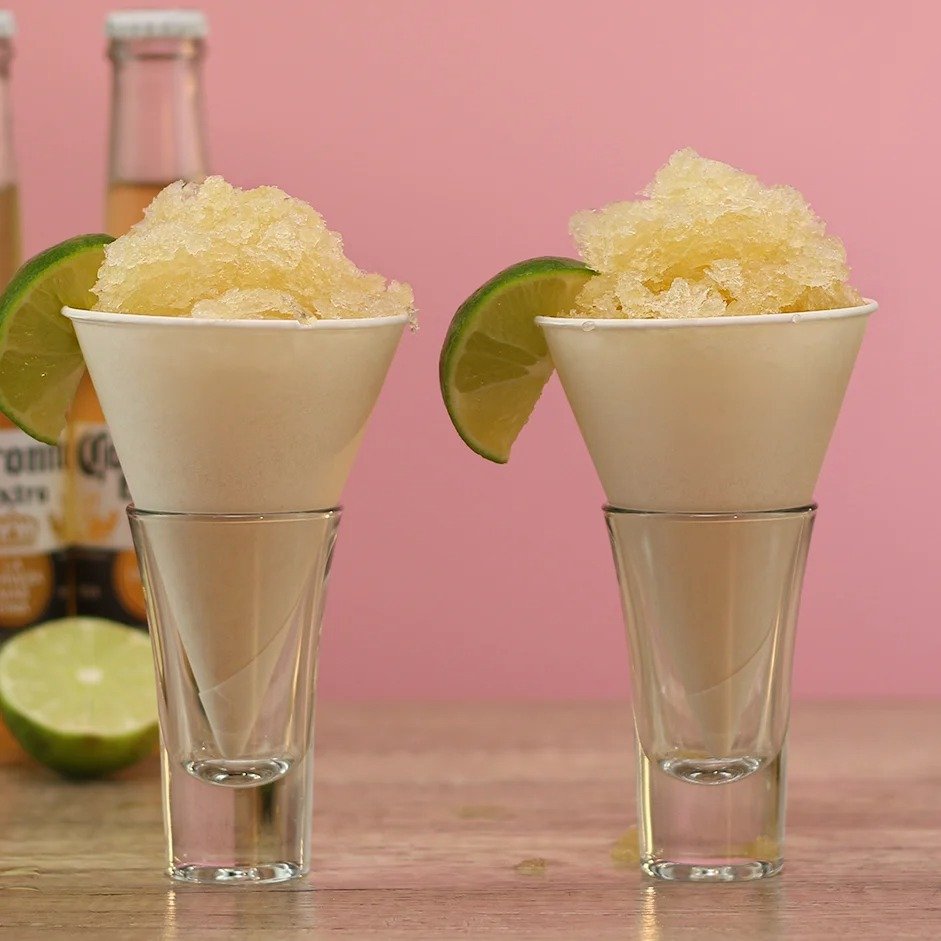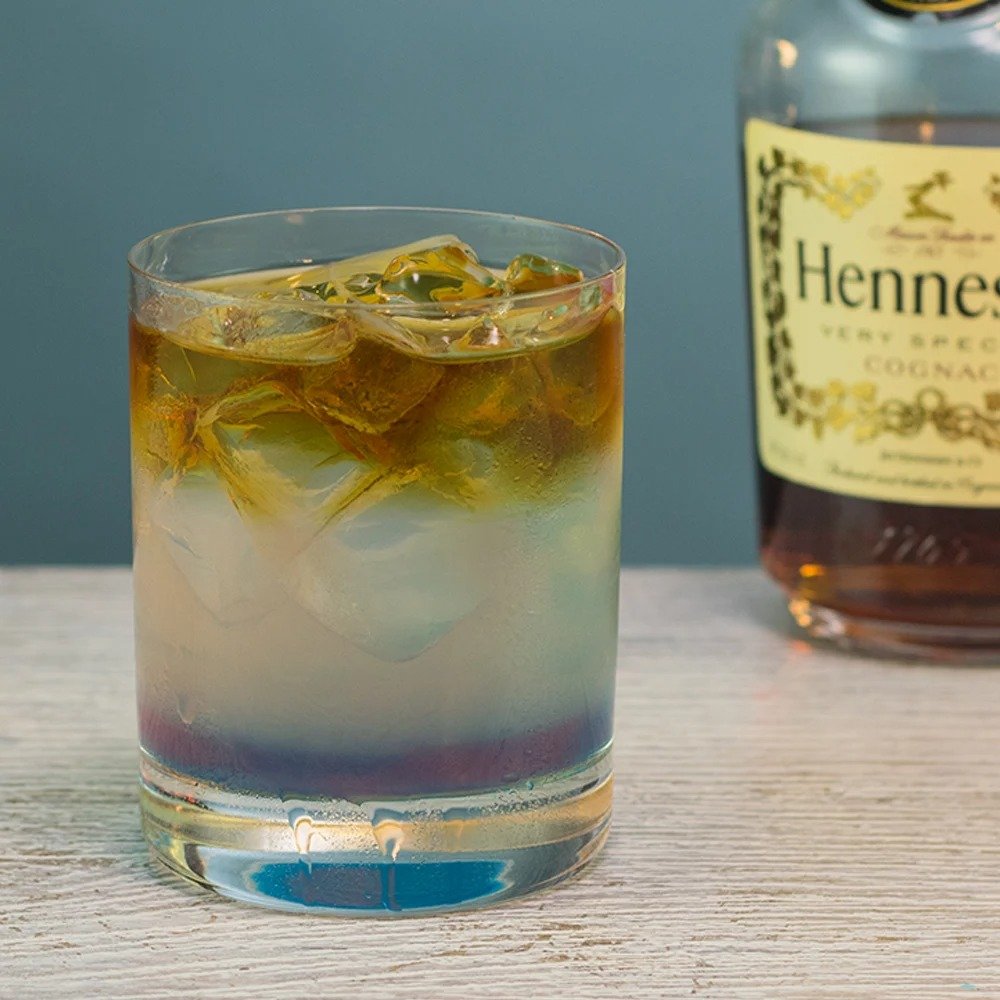
The Ultimate Neutral Grain Spirits Guide: Everything You Need to Know!
WELCOME TO NEUTRAL GRAIN SPIRITS
While all the alcohols in the other guides differentiate themselves by having added steps after fermentation and distillation and/or by having a specific base organic material used for fermentation, neutral grain spirits (NGSs) differentiate themselves by having a lack of extra steps after distillation, as well as a lack of regulation in terms of which base organic ingredients can be used to make them. Although neutral grain spirits — which are also referred to as rectified spirits — do have something special about them: they tend to be bottled at about 190 proof, which is 95% alcohol by volume (ABV). Which is, y'know, insane. https://giphy.com/embed/yAGUGRjLCik6c Even though neutral grain spirits' ABV tends to be way higher than any other spirit on the market, you don't want to be afraid of them. In fact, if you make friends with neutral grain spirits, you'll soon learn that they are one of the most vital components of your home bar because they allow you to make liqueurs such as limoncello or cassis, and also because they let you light your cocktails on fire. https://giphy.com/embed/Mx2wQOxydecH6 With those capabilities in mind, let's take a brief yet comprehensive dive into what neutral grain spirits are all about and learn everything from how they're made to how they're categorized to how they should be stored. So buckle up, grab yourself an authentic jungle juice (and a few friends to share it with), and prepare to learn pretty much everything you'll ever need to know about neutral grain spirits.WHAT ARE NEUTRAL GRAIN SPIRITS?
First up, what the heck are neutral grain spirits exactly? According to the ever reliable Wikipedia, they are highly concentrated alcohols that have been "purified by means of repeated distillation." The wiki goes on to note that "As a consumer product, [they are] almost always mixed with other beverages to create such drinks as punch, or [are] sometimes added to cocktails in place of vodka or rum...." They're also called "neutral" because they lack added flavor — or really any flavor at all aside from horrible throat burn. https://giphy.com/embed/3og0IzNaAxQb8tJq5W But the definition is a bit more strict than that, at least in the U.S. The wiki also notes that "Neutral spirit is legally defined as [a] spirit distilled from any material distilled at or above 95% ABV (190 US proof) and bottled at or above 40% ABV. Although informally, not according to U.S. law, neutral grain spirits are any that are distilled to 170 proof (85% ABV) or higher and also contain no added flavoring. In regards to the history of neutral grain spirits, there isn't much of a story to tell because neutral grain spirits don't necessarily form their own category as a type of spirit — as opposed to say, tequila or whiskey. Instead, neutral grain spirits are more or less those that have been distilled to a much higher ABV than normal, and then bottled immediately afterward. No filtration, no dilution with water, no barrel aging. You get what you get and what you get is strong. https://giphy.com/embed/10mv3iREf35mBa As far as how neutral grain spirits are made, what the different types are, how to store them, and what lies in their future, we'll get into all of that in the sections below. So without further ado, here is everything you need to know about neutral grain spirits!BUT FIRST, DANGERS TO CONSIDER
Because neutral grain spirits can achieve such ridiculously high ABV percentages — one example being Everclear's 95% ABV liquor — they need to be treated with an even higher level of care than normal spirits. Obviously the high ABV means that you'll get tipsy way faster drinking something like Everclear versus regular vodka (or whiskey or tequila, etc.), but there's another danger to consider that's not as obvious: the potential for methanol poisoning. Although it sounds a lot like ethanol, which is the type of alcohol you drink for fun, methanol is a different beast and really doesn't belong in your booze. And while in general it shouldn't be something you have to worry about, as a general rule of thumb to make sure you don't get methanol poisoning, make sure to NEVER DRINK AMATEUR HOMEMADE NEUTRAL GRAIN SPIRITS unless you're confident the source produced the spirits correctly. Also, NEVER DRINK DENATURED ETHANOL, which is sometimes referred to as a denatured rectified spirit. Neutral grain spirits not made correctly may contain dangerous levels of methanol, and denatured ethanol certainly does, so avoid them at all costs. Methanol poisoning is just as bad as alcohol poisoning from ethanol, and can cause horrific damage to your health, which comes in the form of tremors, headaches, permanent blindness, and of course, death.HOW NEUTRAL GRAIN SPIRITS ARE MADE
Now that we know what neutral grain spirits are, it's time to learn about how they're made so you can impress people with your knowledge and also make some on your own if you're ever feeling adventurous (and industrious and flush with cash). Luckily, for the sake of your memory, there's a lot less to learn about the neutral grain spirits-making process versus the other spirits' processes. Neutral grain spirits can be made with any type of grain (and even fruits like grapes) and, as mentioned previously, they don't undergo any special type of processes in order to be considered genuine. With those general notes in mind, let's look at the four simple steps that are required to make neutral grain spirits: mash creation, fermentation, distillation, and bottling. Yeah, that's all there is to it.CREATING THE MASH
First thing you need to make neutral grain spirits is the organic material from which you’re going to derive your fermentable sugars. As mentioned, these organic materials are all encompassing for NGSs, and include everything from grain to corn to grapes to sugarcane to tuber. Although odds are any random bottle of a neutral grain spirit has been distilled from wine. Side note: Neutral grain spirits fermented from grains are referred to as "grain neutral spirits" whereas neutral grain spirits made from grapes are referred to as "grape neutral spirits" or "vinous alcohol."
Wheat is one of the many bases that works for making neutral grain spirits. Image: Flickr / Marco Verch
Once you’ve collected your base ingredients — any one of those listed above — it’s time to throw them into a mash tun, which is basically a giant enclosed steel pot that has a motorized mixer inside of it. What’s going to happen here is the ingredients are poured into the tun — let’s say it’s just wheat for the sake of simplicity — and then are combined with warm water and (sometimes) additional enzymes. Once those ingredients, warm water, and enzymes are in the mash tun, the enzymes (molecular catalysts) will start to break down the starches (little glucose energy storage molecules) into fermentable sugars. Side note: This stage also sees the mash brought to a boiling point in order to sterilize it.FERMENTATION
Now that the starches in the wheat have been broken down into liquid containing fermentable sugars, it's time to strain said liquid and then feed it to yeast — yeast is a single-celled fungus. This happens in massive, sanitized steel containers, at least when it comes to industrial producers, and takes about 2-4 days. Once the wash is in the containers along with the yeast, the yeast will start munching on the wash's sugars and producing ethanol (the alcohol that gets you tipsy) as well as some other byproducts such as CO2 and various flavor compounds. And bang, you have yourself an alcoholic liquid. Recall that this liquid is called the “wash.” But even though there's liquid containing alcohol at this point, it’s still a very low ABV alcoholic liquid — something on the order of 7-15%. To turn this low ABV liquid into a neutral grain spirit, it'll have to be distilled until its ABV rises to something around 80 to 95%.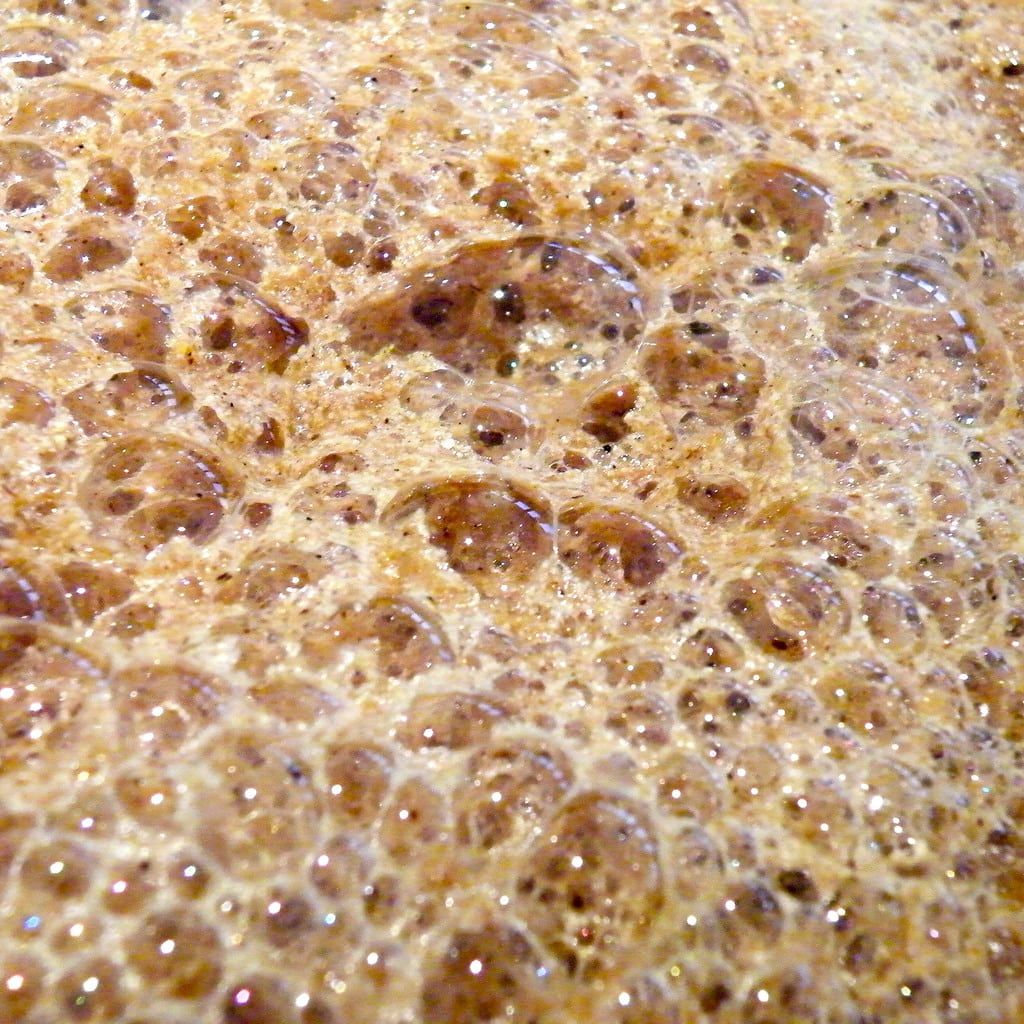
This is what it looks like when yeast is turning sugars into ethanol (alcohol). Image: Flickr / barockschloss
DISTILLATION
The distillation process for neutral grain spirits is, in general, pretty simple: The wash is placed in the bellies of column stills — column stills basically consist of a series of tubular steel (or other metal) containers that work in a similar way to teapots — so that the ethanol and the water in the wash can be separated. This happens by lighting a fire underneath the belly of the stills, which sends the ethanol racing up the long necks of the stills, where it’s collected from openings at the other end of the long necks. The reason that mostly ethanol vapor races up the necks of the stills and most of the water stays in the bottoms is because of the differing boiling points of the two liquids — ethanol has a lower point of 173.1 degrees Fahrenheit, while water has a boiling point of 212 degrees Fahrenheit. This distillation process is then repeated again and again in order to up the ABV to the appropriate 80 to 95%. In terms of how many times the wash is run through the still, that depends — sometimes it's four, five, or even six times.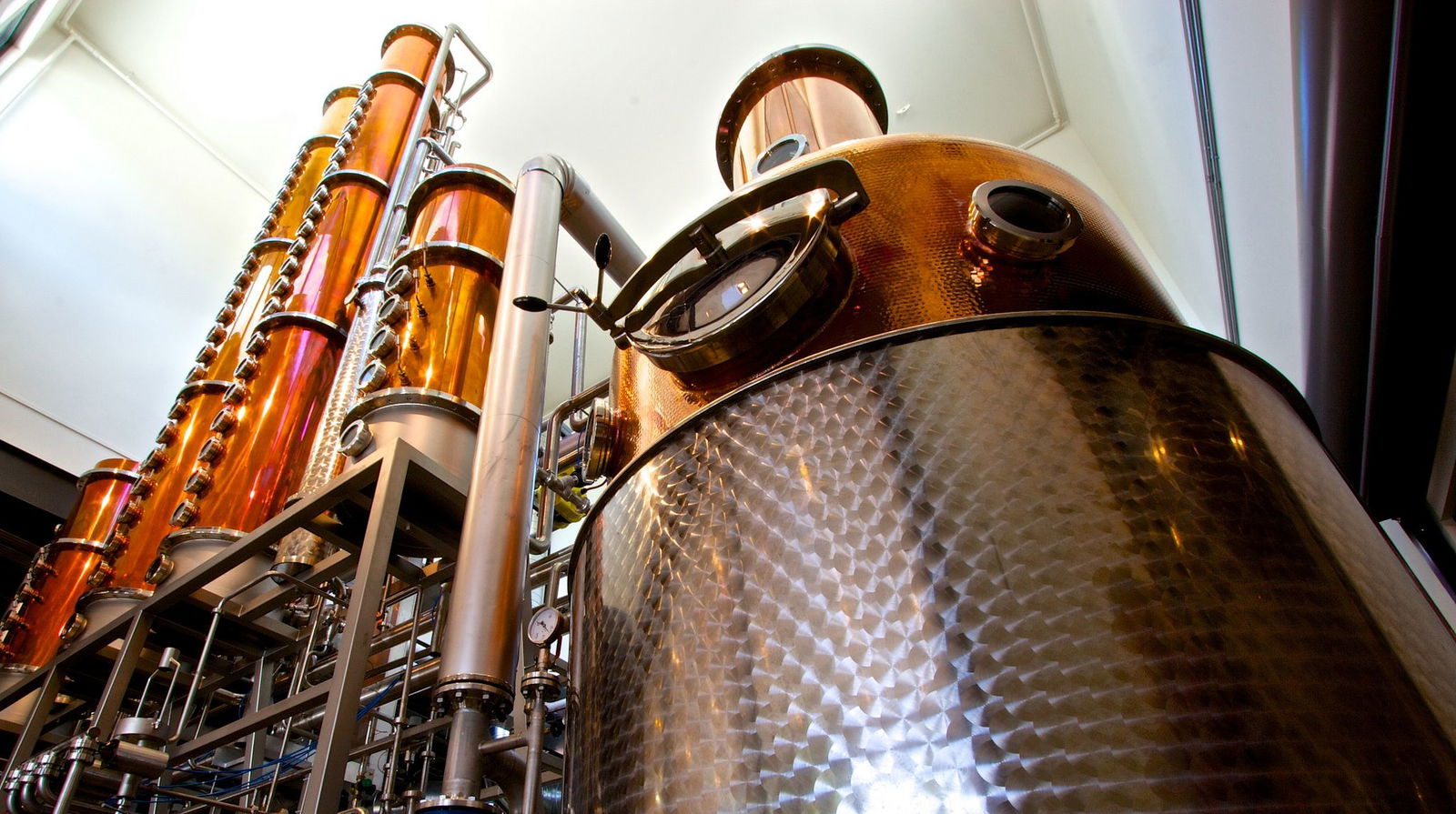
A column (or continuous) still. Image: Flickr / Colorado Distillers Festival
BOTTLING
Finally, these fermented and heavily distilled neutral grain spirits, are bottled up! And what's needed to make that happen? Some glass bottles, some tops, some labels, and bang, the neutral grain spirits are ready to be shipped and sold! Side note: Glass bottles are best for neutral grain spirits because, as MadeHow notes, “[o]ther receptacles, such as plastic, would cause a chemical change in the beverage.”WHICH OTHER LIQUORS/SPIRITS ARE PRODUCED USING NGSs
OK, you now know what neutral grain spirits are and how they're made, so it's time to learn about all the different types. And when it comes to different types of neutral grain spirits, well, there aren't really any truly distinctive ones to discuss. Yes, neutral grain spirits' ABVs can vary widely, and yes, they'll taste mildly different depending on how they were distilled, what they were distilled from, and who did the distilling, but still, we're ultimately just talking about straight alcohol with no flavors — or even any water — added. Considering this lack of characteristics for categorization, we'll instead use this section to talk about what types of liquors, liqueurs, tinctures, and bitters can be made using neutral grain spirits. And let us tell you, people, when it comes to what neutral grain spirits can be used for, the list is real long. So long it even includes things like industrial insolvents — which you should NEVER EVER drink. Everclear If you're buying a straight-up bottle of a neutral grain spirit off a liquor store shelf — or more likely online — then you'll probably be buying a bottle of Everclear. Everclear comes in either 190 proof (95% ABV) or 151 proof (75% ABV) and goes for about $20 a bottle. Be EXTREMELY CAREFUL with this stuff. It is highly flammable and obviously extremely potent.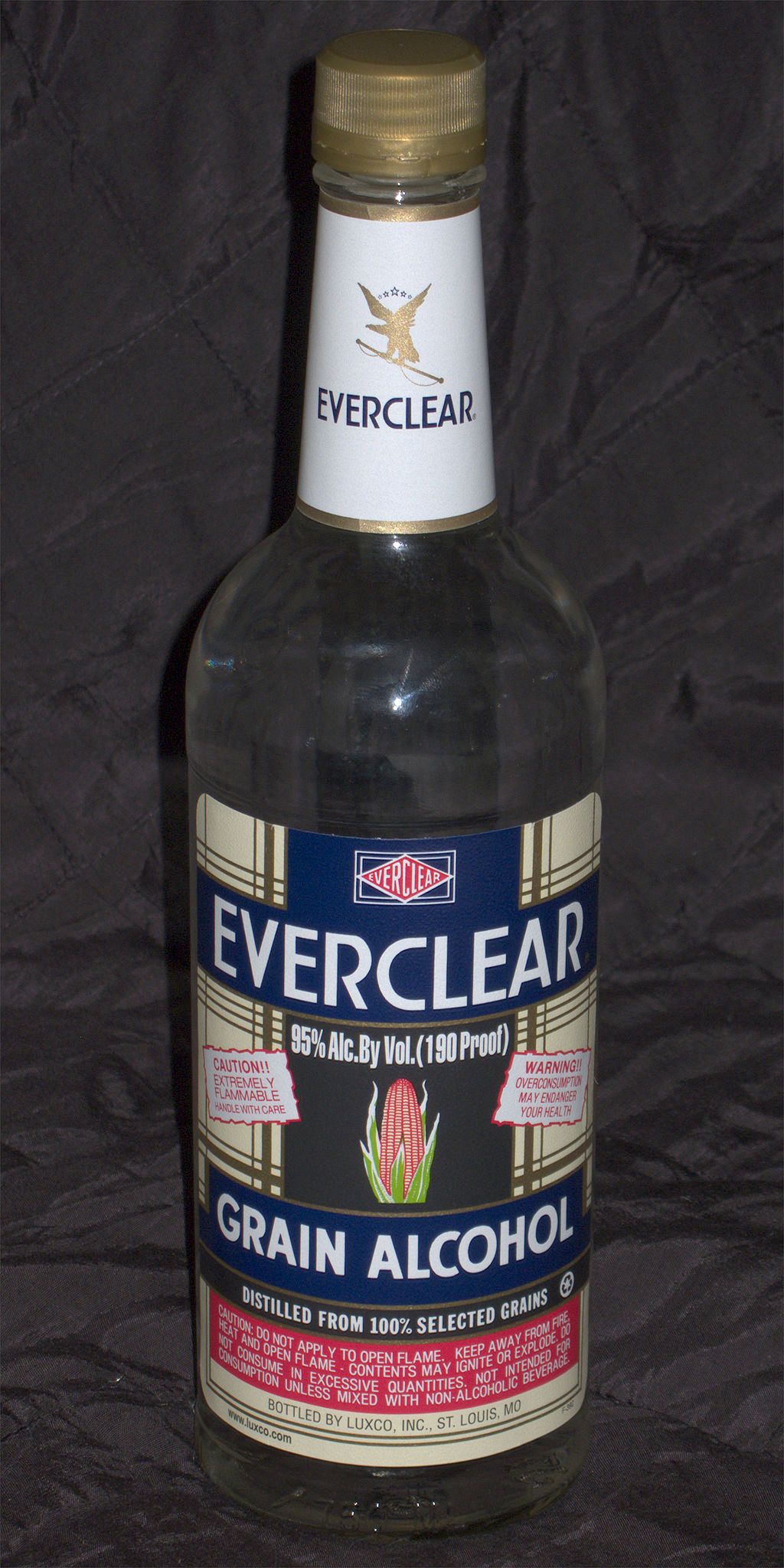
A bottle of Everclear. Image: Wikimedia / Bighead
Blended Whiskey Neutral grain spirits are also frequently used in cheaper whiskies in order to up their ABV. For example, blended whiskies in the U.S. can use up to 80% neutral grain spirits, coloring, and flavoring with only 20% of the liquor coming from actual whiskey that's been aged in barrels. Cut Brandy Cut brandy is a type of brandy that's made with brandy (duh), water, and a neutral grain spirit — sometimes sugar and caramel coloring are also used to soften the brandy's flavor profile and also give it some color. Unlike whiskey, however, there's actually a label system in place to let you know how much actual brandy is in your cut brandy. Here is how that labeling system works: 0 Stars: Contains only a minuscule amount of brandy to color the overwhelming amount of neutral grain alcohol 1 Star: Roughly 33% of the brandy is made up of actual brandy. 2 Stars: Roughly 50% of the brandy is made up of actual brandy. 3 Stars: Roughly 75% of the brandy is made up of actual brandy. Gin Any gin you see on the shelves or in bars always starts out with an NGS (which can include a high ABV vodka). In fact, all gin is when it comes down to it is an NGS that's had botanicals steeped in it in one way or another. If you want to learn more about how gin is made, check out the Ultimate Gin Guide. Bitters Bitters are basically neutral grain spirits that have been infused with flavors from botanical matter — this is done by soaking said botanical matter in the neutral grain spirit until it leaches the flavors. The botanicals that can be used to infuse the neutral grain spirits with their flavors include spices, tree bark, roots, seeds, fruits, as well as other flavor-imparting organic materials. These flavor-infused neutral grain spirits are then added — usually drop by drop because they're so potent — to cocktails for flavor profile adjustments.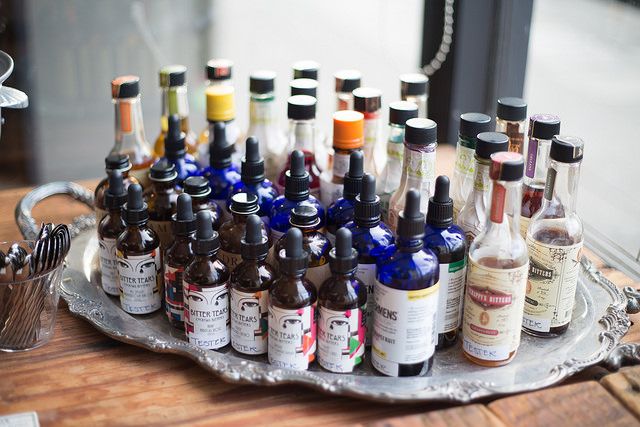
A sampling tray of bitters. Image: Flickr / Scott Schiller
So if you're looking to make some DIY bitters, you'll definitely want a neutral grain spirit bottle on hand — various bartending professions say that as a basic rule of thumb, the higher the proof, the better. So you'll want to use at minimum 50% ABV vodka, and at max 95% ABV Everclear. Side note: Even though they're called "bitters," bitters are not always bitter. They range in flavor and can even be quite sweet. Liqueurs Liqueurs are very similar to bitters, and can even be considered more or less the same thing in many cases — although they do tend to be sweeter. To make liqueurs, you basically need to go through the same process as that required for making bitters: get yourself a neutral grain spirit, a glass bottle full of a flavorful organic ingredient — like fruit, flowers, herbs or nuts — and proceed to soak said organic ingredients in the NGS until it's leached out all the flavor. Limoncello Limoncello is an Italian lemon liqueur with an ABV around 25-30% that's traditionally served chilled as an after-dinner drink. It's made by steeping lemon zest (which is the peel of lemon without the white stuff on the underside) in one type of an alcohol or another, including, you guessed it, neutral grain spirits. Again, as with the other liqueurs and the bitters, the idea is to steep the lemon zest in the highest ABV alcohol possible. So if you're making some DIY limoncello, make sure to get your hands on a bottle of NGS that's at least 75% ABV.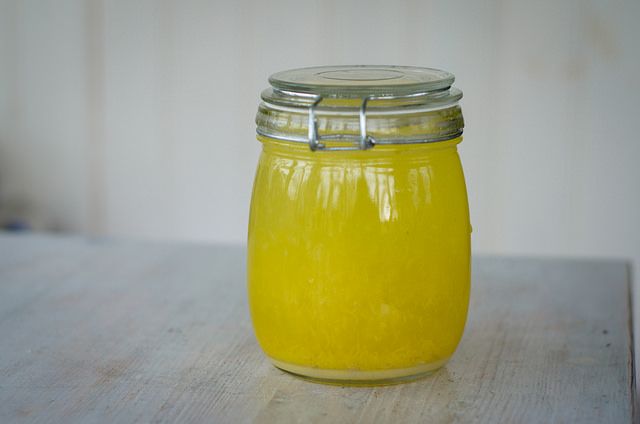
A jar of limoncello liqueur. Image: Flickr / erik forsberg
Crème de cassis Crème de cassis (or Cassis liqueur) is a liqueur flavored with the black currant shrub's piquant berries. To make the cassis, the piquant berries are steeped in a neutral grain spirit, which leaches out their flavors and color. This process is pretty much identical to that used for the other liqueurs on this list. Absinthe Absinthe, which ranges from 45 to 74% ABV, is a spirit that gets its flavoring from anise, wormwood, fennel, and other botanicals. As with gin, absinthe is made by steeping botanicals in a high-ABV neutral grain spirit. Although the traditional NGS used for making absinthe is made from white grape juice.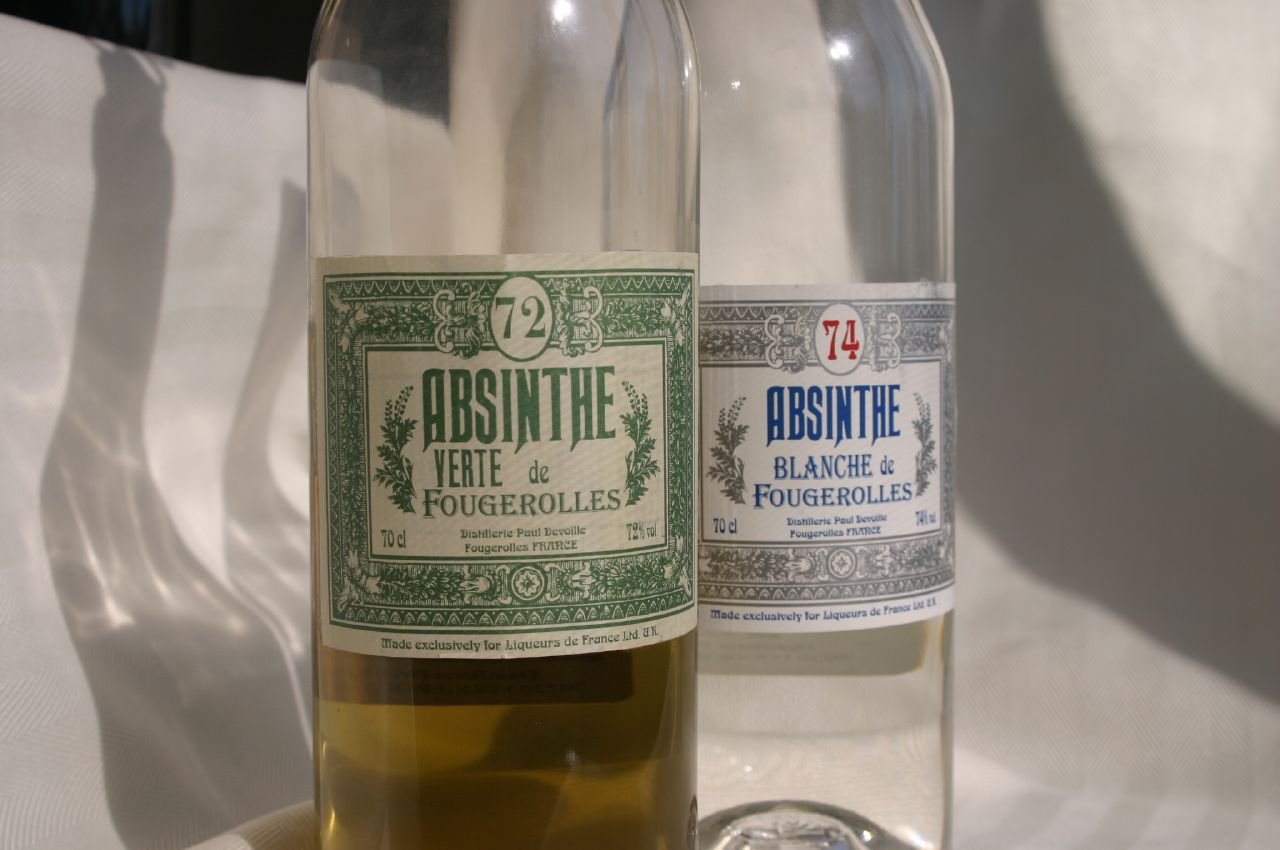
Absinthe verte and absinthe blanche. Image: Flickr / Madison Scott-Clary
HOW TO DRINK NEUTRAL GRAIN SPIRITS
If you've been paying attention to everything going on in the previous sections, then you now know what neutral grain spirits are, how they're made, and the different liqueurs/liquors that use them in their production process. With all that in the back of your brain, it's now time to get to the real fun stuff: how to drink these simple, hardcore, flavorless spirits. And yeah, long story short here: drink them carefully. https://giphy.com/embed/xT4uQtU56CPe0qbY3e Unless you're talking about vodka (which is technically a NGS, even according to U.S. legal restrictions), you should pretty much never ever drink a neutral grain spirit on its own — at least not if it's ridiculously high ABV. Yes, some people will line up shots of 151 proof booze from time to time, but they can still make you feel sick, uncomfortable, or like your whole torso is on fire. As far as doing shots of a 190 proof neutral grain spirit, just go ahead and reverse Nike's famous slogan from "Just do it," to "Just don't do it." Seriously, do not shoot 190 proof alcohol, no matter how many morons are doing it on YouTube. Why shouldn't you? Here are the side effects if you happen to drink too much 190 proof alcohol: extreme intoxication, vomiting, impairment of motor skills, nausea, brain damage, and alcohol poisoning. Not to mention permanent blindness.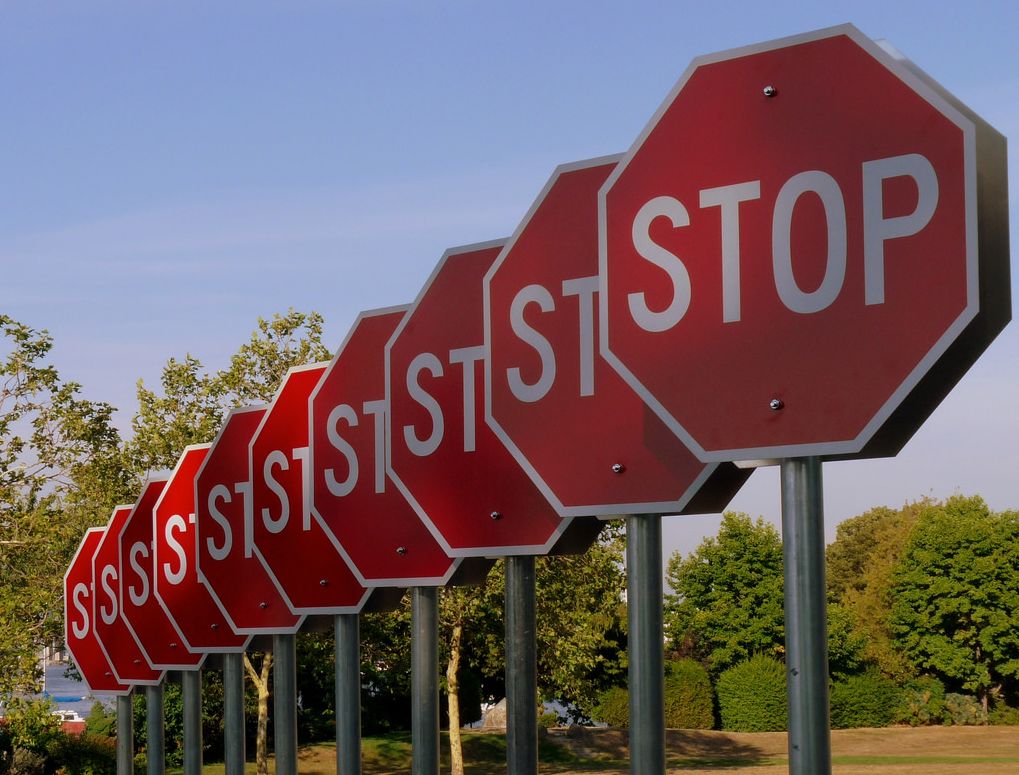
Image: Flickr / Michael Whyte
And while all of the dangerous side effects listed above can occur with regular alcohol, the significant difference is that with a 190 proof alcohol like Everclear, they'll all happen much faster. Think about it: doing one shot of 95% ABV alcohol would be roughly equivalent to doing 2.5 shots of vodka simultaneously. That's a kind of potency you really don't want to mess with.NEUTRAL GRAIN SPIRITS IN COCKTAILS (PREPARE FOR FIRE)
So how should you drink a high ABV neutral grain spirit? In cocktails, punches, and jungle juices! It's way more fun — and way less disgusting and painful — to make NGS mixed drinks anyway. And while we give you plenty of NGS recipes below, here are some general rules of thumb to keep in mind once you start experimenting with this seriously potent stuff. Side note: You don't even really need to bother with a 190 proof NGS, 151 will do just fine for just about any drinking (or fire-lighting) purposes you can think of. 1. Use it in punches and jungle juices: One of the nice things about a high ABV NGS is the fact that you don't need too much of it to boozify a punch or jungle juice. We'll give you a nice handful of recipes in the below sections to give you some ideas that'll help you figure out how something like Everclear works best in big-batch cocktails.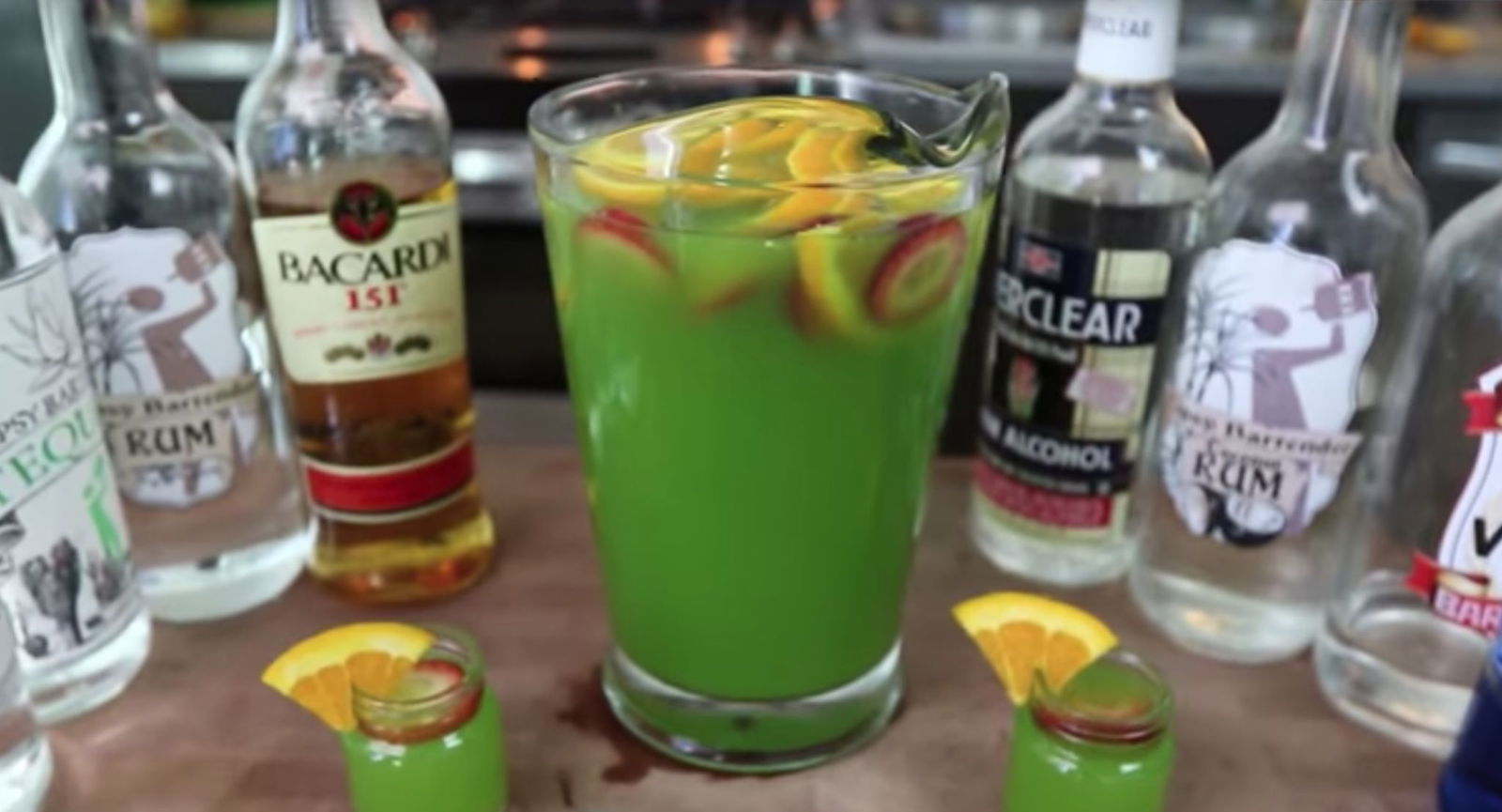
One type of jungle juice that calls for Everclear. Image: Tipsy Bartender
2. Use it to SAFELY light your drinks on fire: We know you're all excited about lighting your drinks on fire, but before you go all pyro on your mixed drinks, we have a few crucial tips that you need to keep in mind to keep yourself and anybody else around you safe: - When creating a flaming drink, make sure to clear the immediate area of pretty much anything, especially anything that's flammable. Mixed drink flames can most definitely ignite random flammable objects on fire, and if you're caught off guard, this can be a really bad problem to deal with. - Lightly add your high ABV NGS to the top of your shot/cocktail. Due to its alcohol content, something like Everclear should naturally sit on the top of any other liquor, but you'll still want to pour it gently and slowly, ideally on the back of a bar spoon. - Do not, under any circumstances, drink the shot or cocktail while it's still on fire. Hopefully this is self evident, but if it's not, just trust us. You really don't want to light your mouth on fire. - Don't use Zippo lighters, matches, or anything that doesn't self-extinguish to light the flame — those sources of ignition could ruin the drink's flavor profile. - Don't fill the glass all the way; if you do, that could cause splashing when you put the flame out with your hand or blown air from your mouth. - Have a fire extinguisher at the ready (for obvious reasons). https://giphy.com/embed/7WMfMeHukYFJm 3. Cut it with water to make vodka: If, for some reason, you're looking to make especially cheap vodka, you can just go ahead and cut a 190 proof or 151 proof NGS with water. How? Well, if you want to cut a 190 proof NGS down to 95 proof, just put equal parts NGS and water in a glass — with the same volume of liquid, but half the alcohol, the alcohol content will be cut down by 50%.WHERE ARE YOU NOT ALLOWED TO BUY 190 PROOF NEUTRAL GRAIN SPIRITS IN THE U.S.?
As a little side note for this How to Drink Neutral Grain Spirits section, we also wanted to mention the U.S. states where you can't buy 190 proof neutral grain spirits — 'cause we don't want you putting on pants and going to the store only to find out this stuff isn't even on the shelves in your state. So if you live in Florida, Maine, Minnesota, Nevada, North Carolina, Ohio, Pennsylvania, Iowa, Massachusetts, Hawaii, Michigan, New York, Washington, or New Hampshire and you're looking for a bottle of 190 proof neutral grain alcohol, you won't be able to find it. Although you can get your hands on some 151 proof spirits in some of these states.SOME POPULAR NEUTRAL GRAIN SPIRITS RECIPES
Alright alright alright, it's finally time to get down to some drink recipes that'll welcome you to the world of using Everclear in mixed drinks. Here are ten of our favorites that'll give you some sense of what flavors/liquors/liqueurs work best with high ABV neutral grain spirits.HOW TO STORE NEUTRAL GRAIN SPIRITS
In terms of storing neutral grain spirits, again, this simple booze is quite easy to handle. Really all you need is a dark, cool place — y’know, like a cupboard or the inside of a liquor bar — a glass bottle, and bang, you’re good to go. The glass bottle is important because you don't want the NGS to leech nasty flavors from something a material like plastic.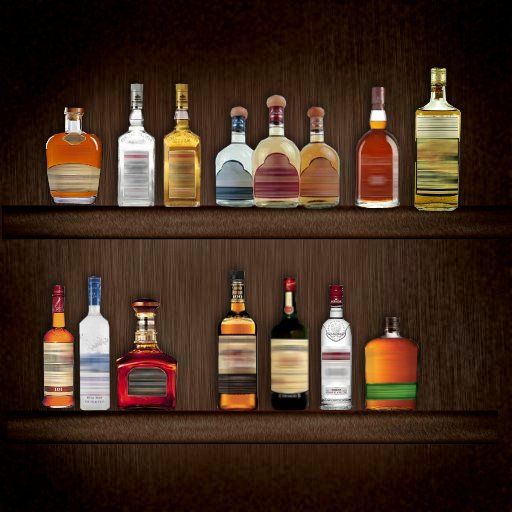
Image: Flickr / Maria Korolov
Despite that basic outline for storage, there are a few other details you’ll want to pay attention to. First of all, if your bottle is capped with a cork, make sure to store the bottle upright ’cause otherwise the neutral grain spirit will eat away at the cork. You also really want to make sure that no sunlight can get to the bottle, as that will speed up the neutral grain spirit’s evaporation speed, as well as change the flavor of the neutral grain spirit. Basically, when it comes to NGSs, you'll want to store them just like you store every other liquor — be extra careful not to put them in front of any possible sources of open flames though 'cause this stuff is gasoline-grade flammable.THE FUTURE OF NEUTRAL GRAIN SPIRITS
Now that you know all about what neutral grain spirits are, how they're made, how they're categorized, how to drink them, and how to store them, the only other thing you'll want to know is what the future holds for these basic yet potent spirits. And, thanks again to their simplicity, there doesn't seem to be much in terms of technological innovation on the horizon for making NGSs. Nonetheless, there are a couple of trends happening with NGSs that are worth considering: changes in legal status in various U.S. states, as well as an increase in the popularity of home distillation.LEGALITY IN THE U.S.
We mentioned in the How to Drink Neutral Grain Spirits section the states where you currently aren't allowed to buy 95% ABV neutral grain spirits like Everclear, but federal, and certainly state, laws are always changing. This means that there's a reasonable chance that high ABV neutral grain spirits will be legal in states where they once weren't and perhaps vice versa. For example, in 2017 the Virginia state legislature passed a bill allowing the sale of neutral grain spirits up to 151 proof, which hand't been allowed since 1993. On the other hand, in 2014, there was an attempt to pass a bill in Wisconsin prohibiting the sale of high-proof alcohol, which apparently didn't work out.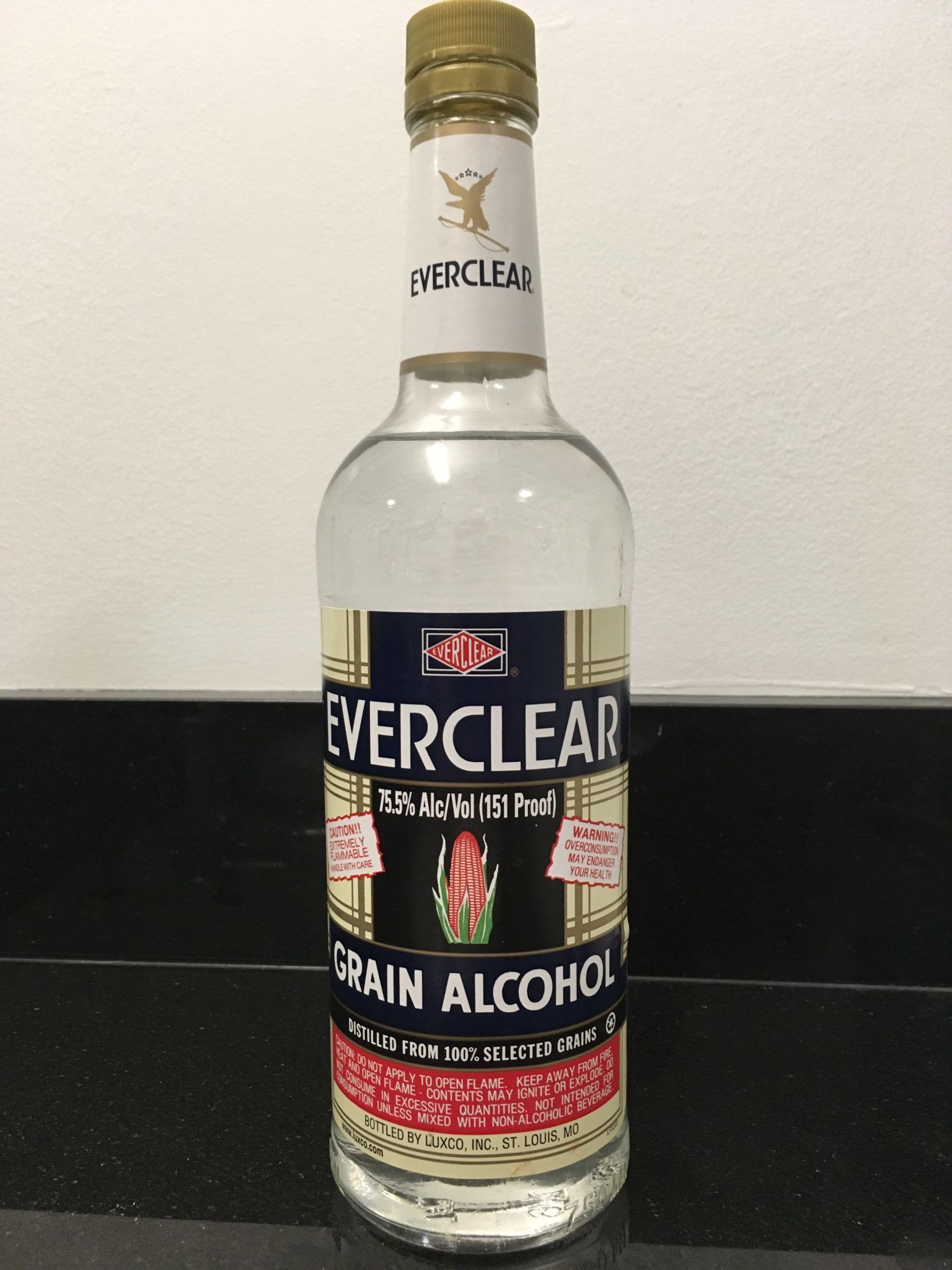
A bottle of 151 proof Everclear. Image: Tipsy Bartender
So keep in mind that when it comes to the legality of high ABV neutral grain spirits, things are always changing — which means if you're trying to buy, drink, or sell some 190 proof liquor in your state, you should double check all laws that may apply to you before proceeding.LIKELY INCREASE IN POPULARITY OF HOMEMADE NGSs
Remember how we mentioned that you should, under no circumstances, imbibe amateur homemade neutral grain spirits? Well, guess what? Apparently it's becoming a lot more popular to make homemade neutral grain spirits — a.k.a. moonshine — 'cause people don't listen to us! Seriously though, according to some industry experts, there's a lot of interest growing in the homemade moonshine business, with more and more people buying up large quantities of corn, sugar, and fermenting strains of yeast in various areas of the country — even where it's strictly illegal to make homemade alcohol for sale or consumption. https://giphy.com/embed/3o6MbdEWSGRYOeHjVu And you may be saying to yourself: Well, people are just making these potent neutral grain spirits at home more and more often because they want to save money, or something reasonable like that. But that's not the case. Instead, what seems to be causing the increase in interest in making homemade neutral grain spirits is literally one television show: Discovery Channel's Moonshiners series. As of this writing, Moonshiners is still on the air, so you can bet on the popularity of making homemade moonshine to increase even further. And as mentioned earlier, laws prohibiting the sale of high ABV neutral grain spirits are constantly changing in different states, so there may come a time when making DIY neutral grain spirits in your house is not only legal, but also a totally normal thing to do. Although making high ABV alcohol is still a highly dangerous endeavor — y'know, 'cause of the potential for explosions and all that — so maybe you should start with just buying a bottle of 151 Everclear before jumping in and starting your own distillation operation in your parents' basement.INCREASE IN WORLDWIDE CONSUMPTION
As a final note on the future of NGSs, we have evidence that there is going to be major growth in this sector. According to various market reports, major alcohol companies are constantly increasing their NGS production capacity in order to serve all the other various alcohol types that rely on NGSs (those mentioned in the Which Other Liquors/Spirits Are Produced Using NGSs). This marked increase in NGS production is due to the fact that alcohol consumption is rising around the globe, especially in North America and Europe. So it's good news all around when it comes to the future of neutral grain spirits.EIGHT OF OUR FAVORITE NEUTRAL GRAIN SPIRITS DRINKS
1. BAILEY'S COMET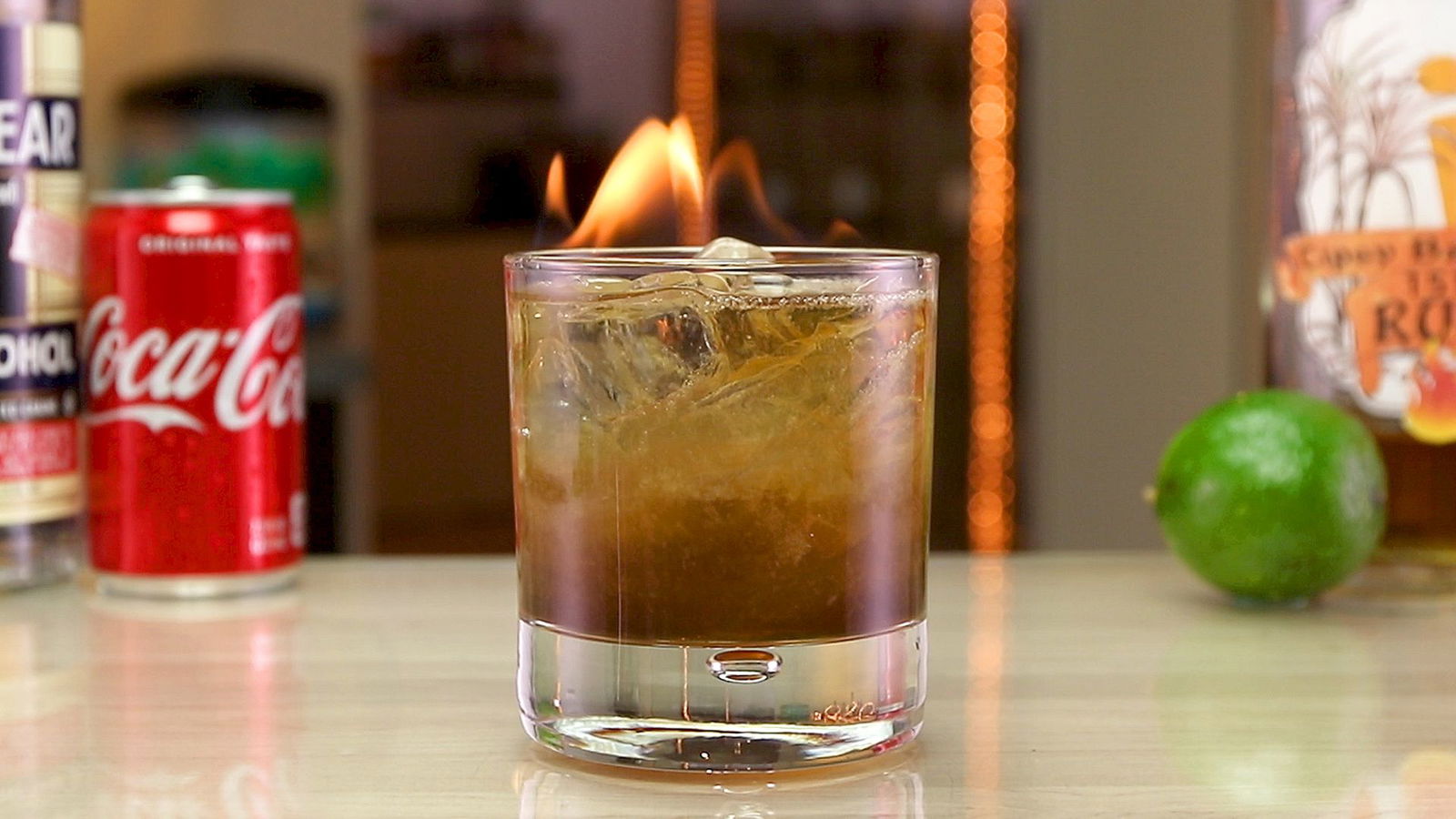 2. BLUE RASPBERRY JOLLY RANCHER
2. BLUE RASPBERRY JOLLY RANCHER
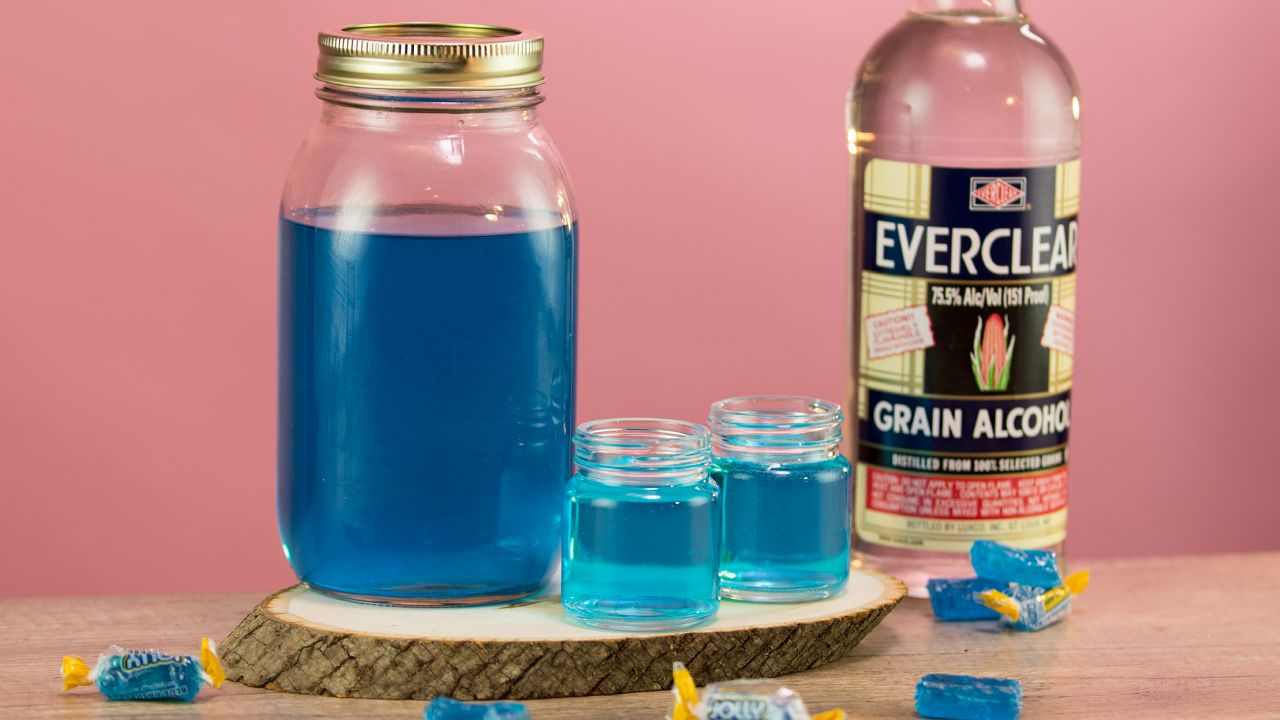 3. MARGARITA MOONSHINE
3. MARGARITA MOONSHINE
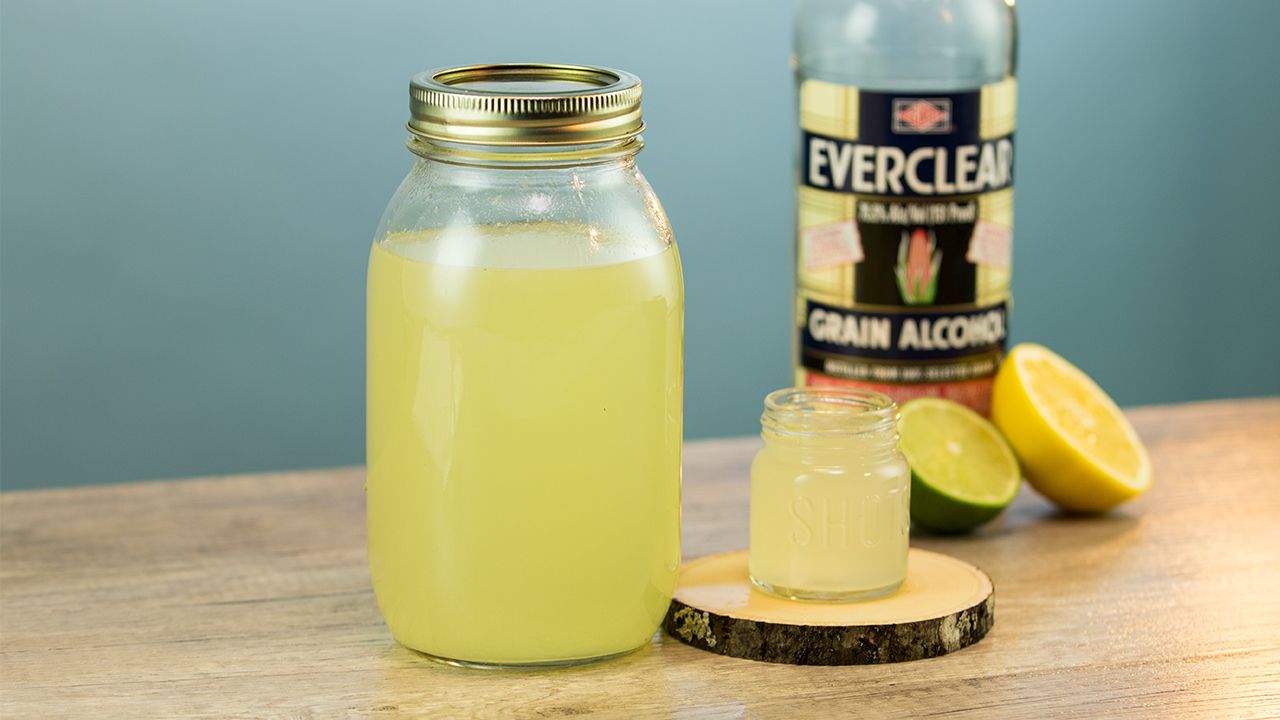 4. NUCLEAR REACTOR SHOT
4. NUCLEAR REACTOR SHOT
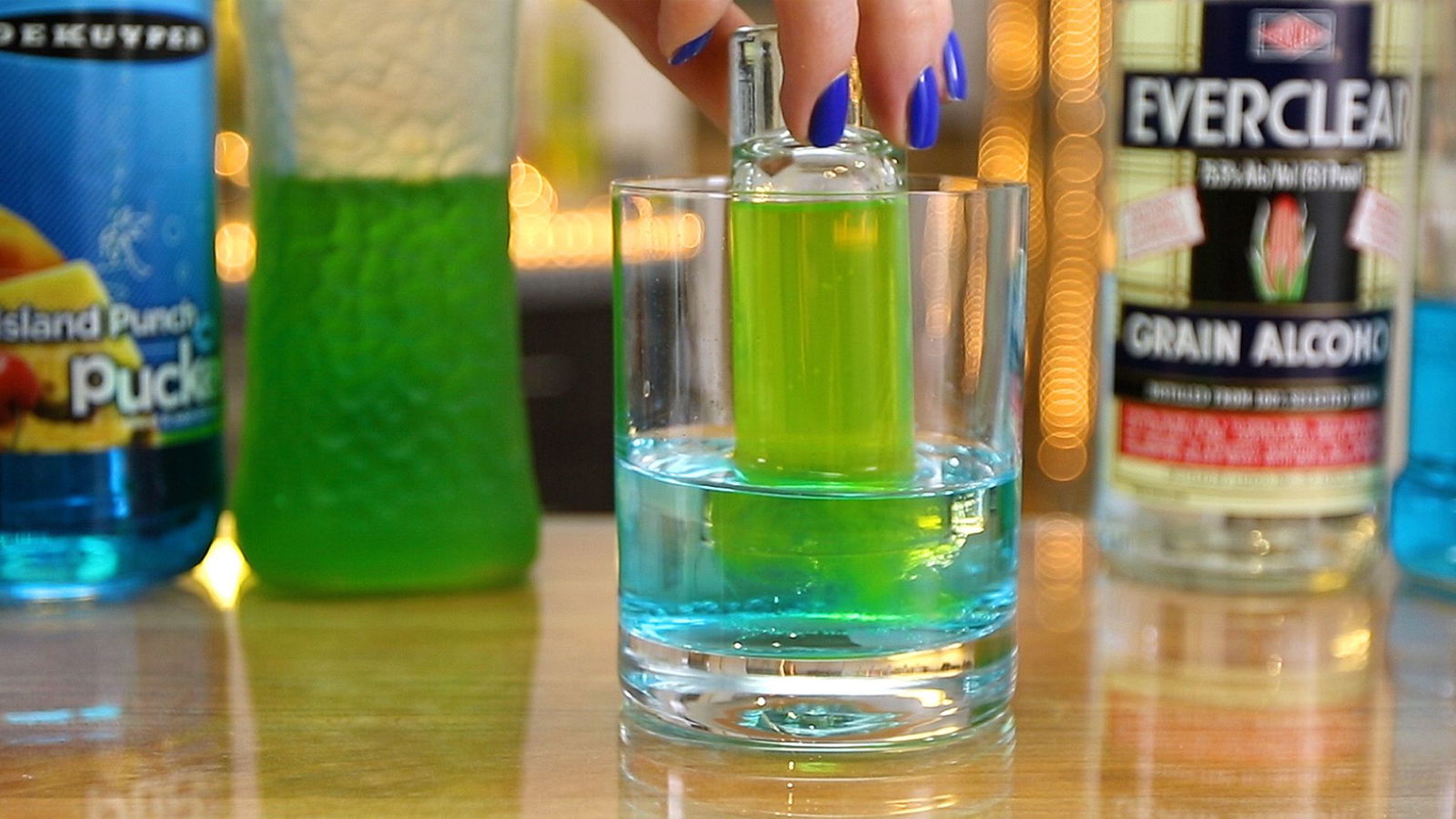 5. NUTCRACKER FROZEN JUNGLE JUICE
5. NUTCRACKER FROZEN JUNGLE JUICE
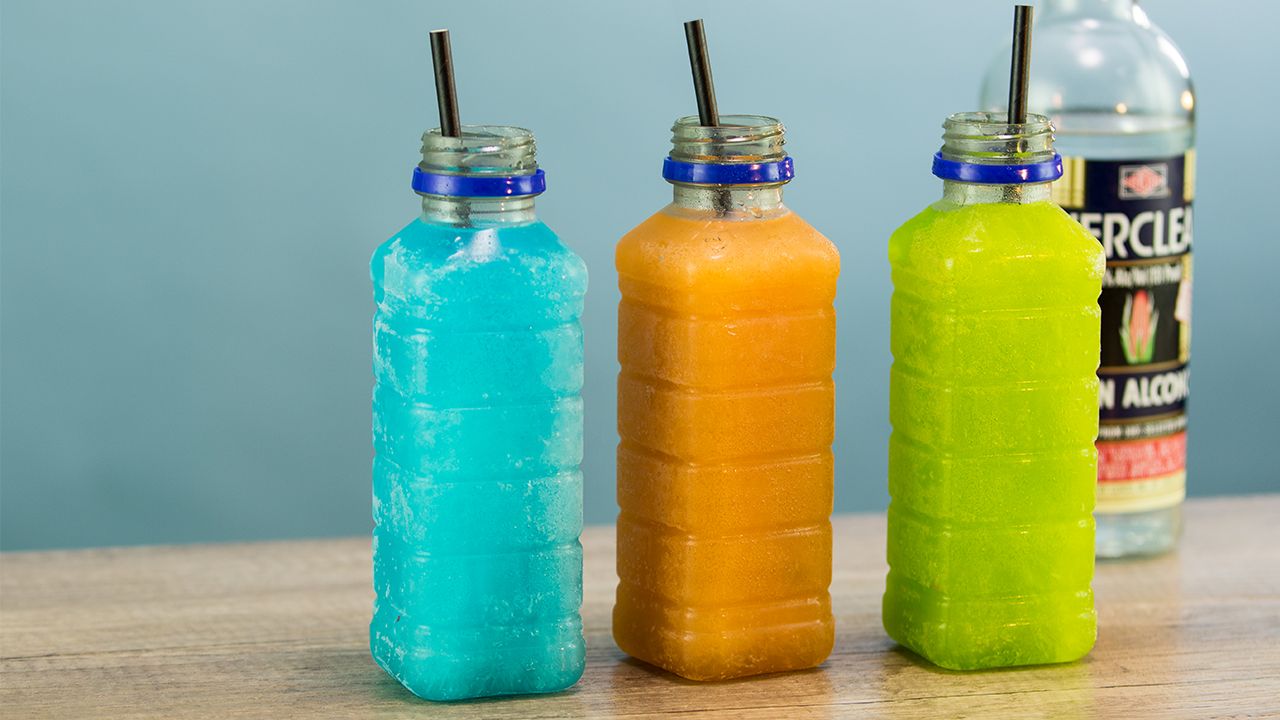 6. SKITTLES MOONSHINE
6. SKITTLES MOONSHINE
 7. THE FLAMING MELON
7. THE FLAMING MELON
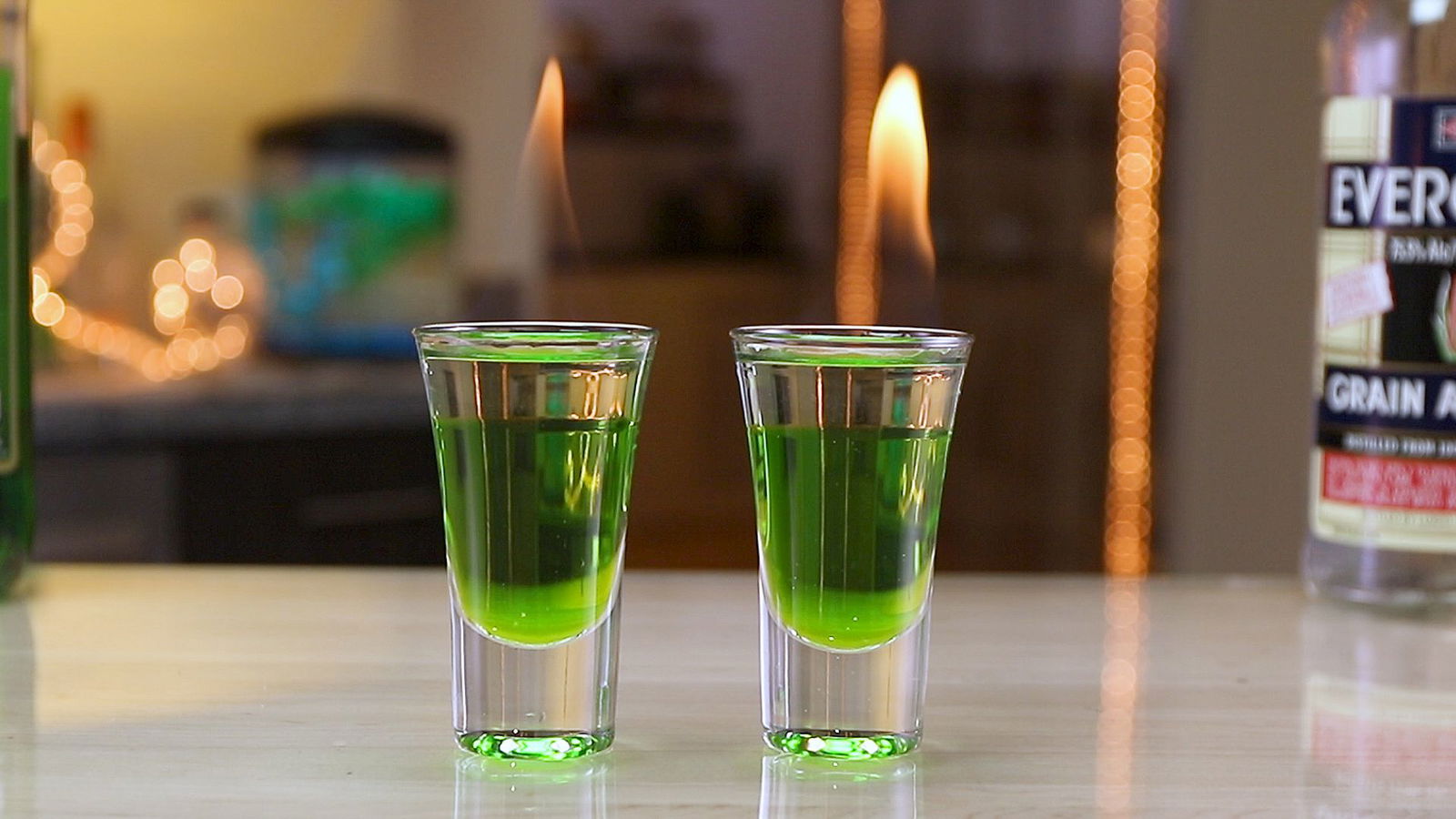 8. THE LANDMINE COCKTAIL
8. THE LANDMINE COCKTAIL
 9. TRASH CAN PUNCH
9. TRASH CAN PUNCH

GIFS: Giphy

Independence Day Drinks
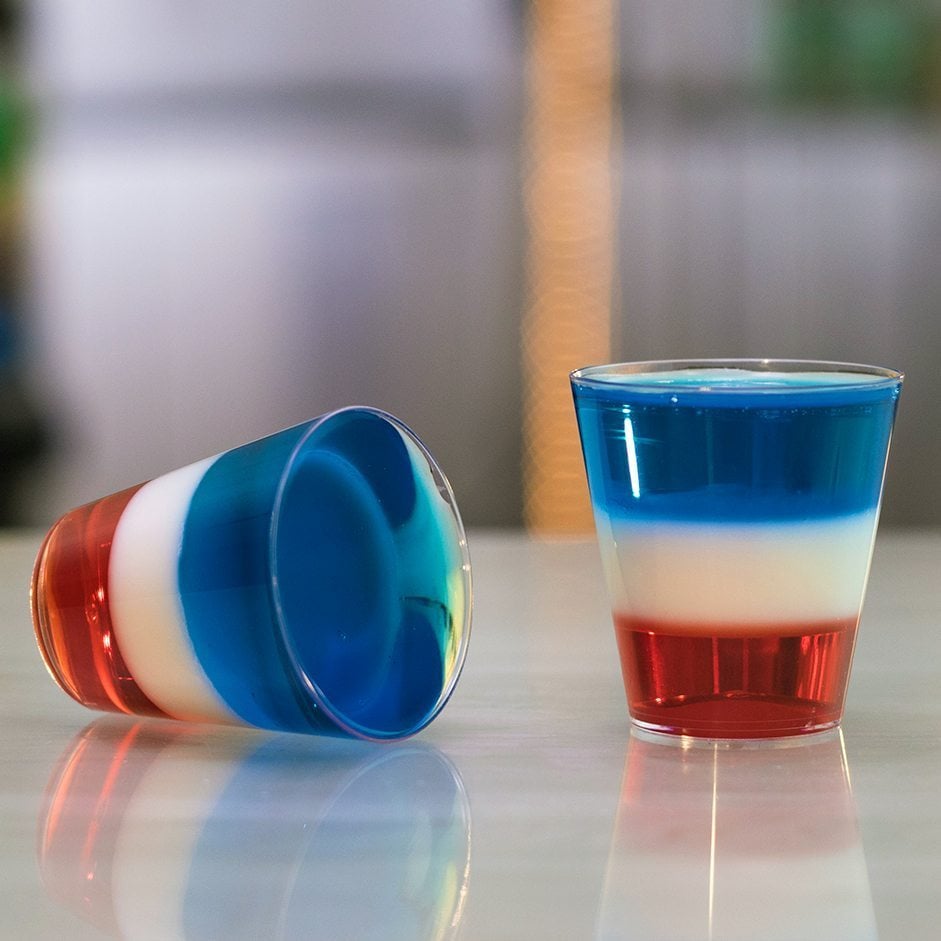
4th Of July All American Jello Shots

4th Of July Cake Vodka Milkshake

4th Of July Diversity Bomb Shot
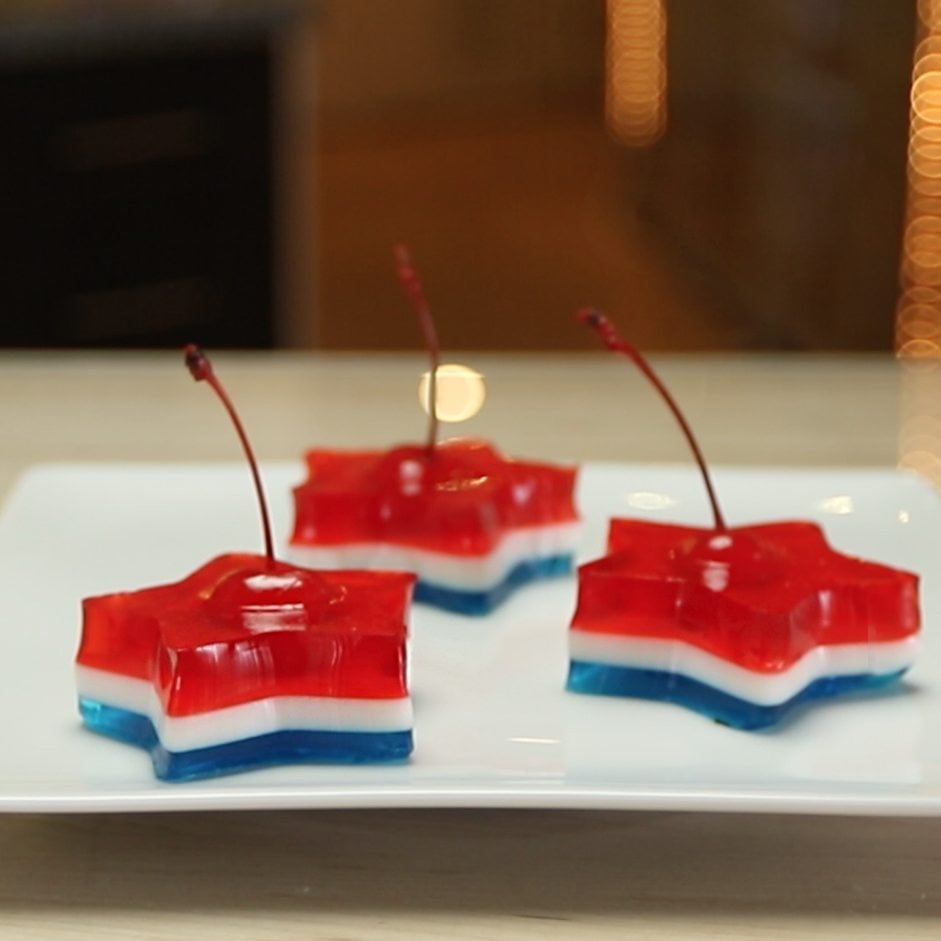
4th Of July Jello Shots
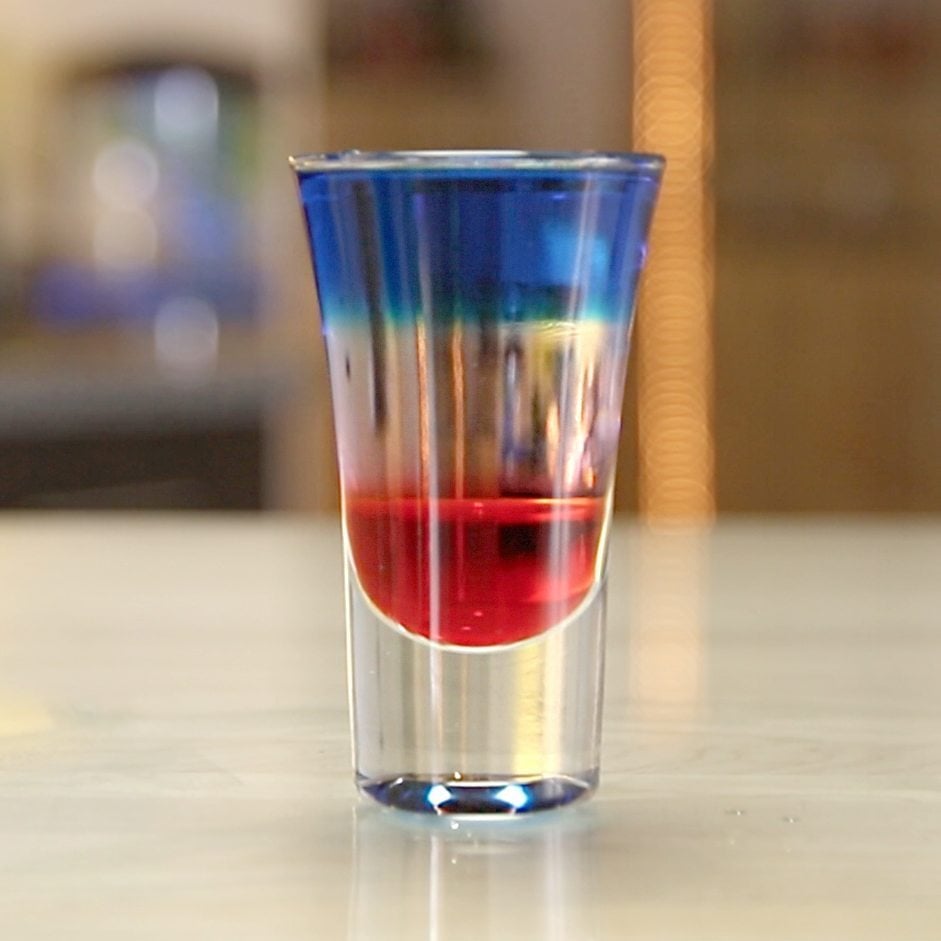
4th Of July Layered Shots
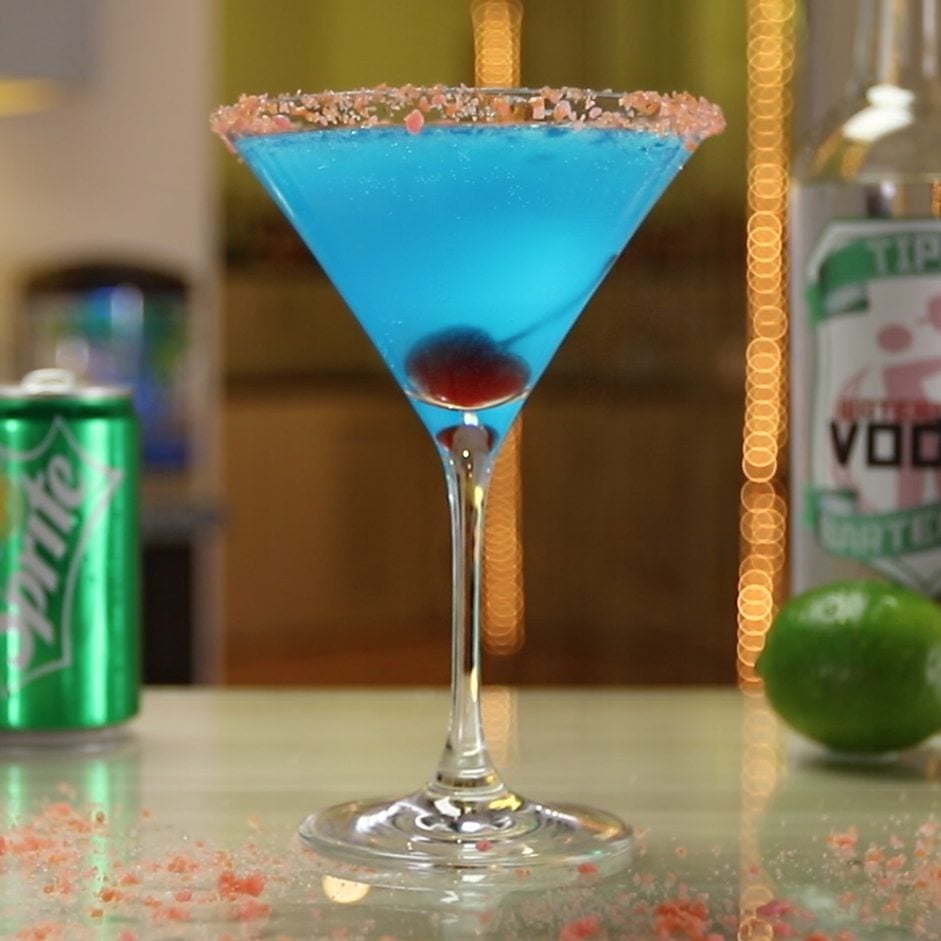
4th Of July Pop Rocks Martini
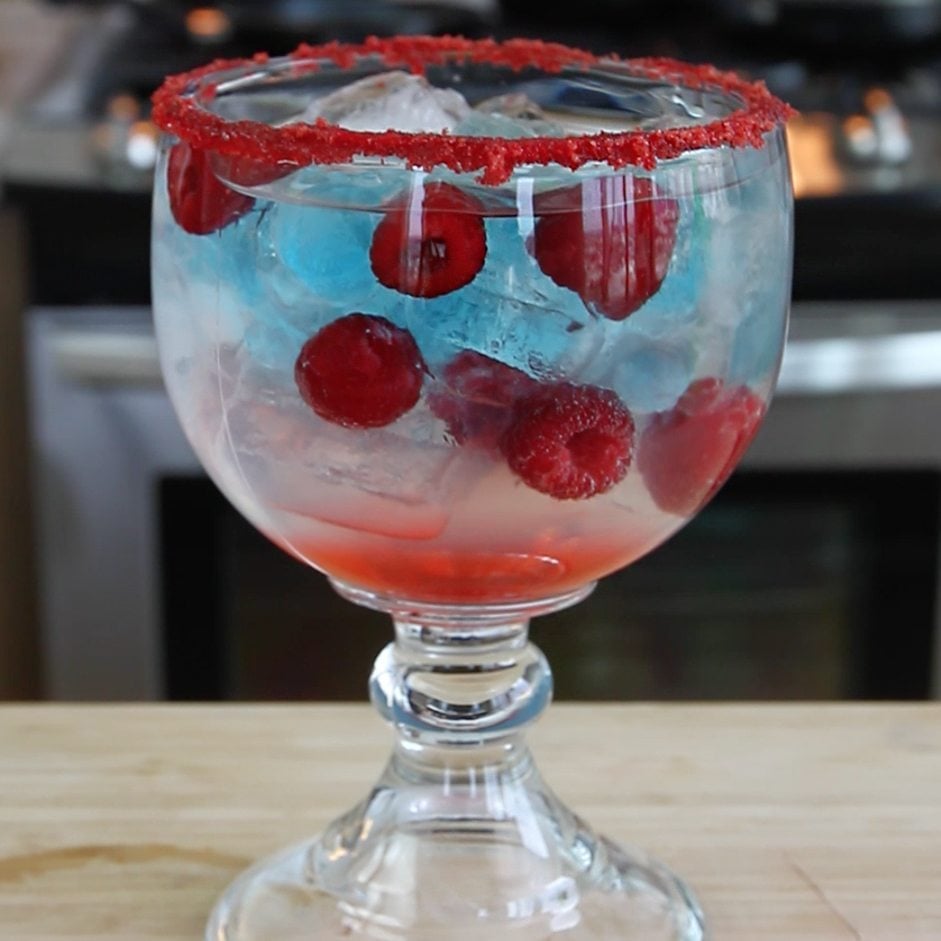
4th Of July Raspberry America

4th Of July Spiked Bomb Pops

4th July Popsicle Margarita
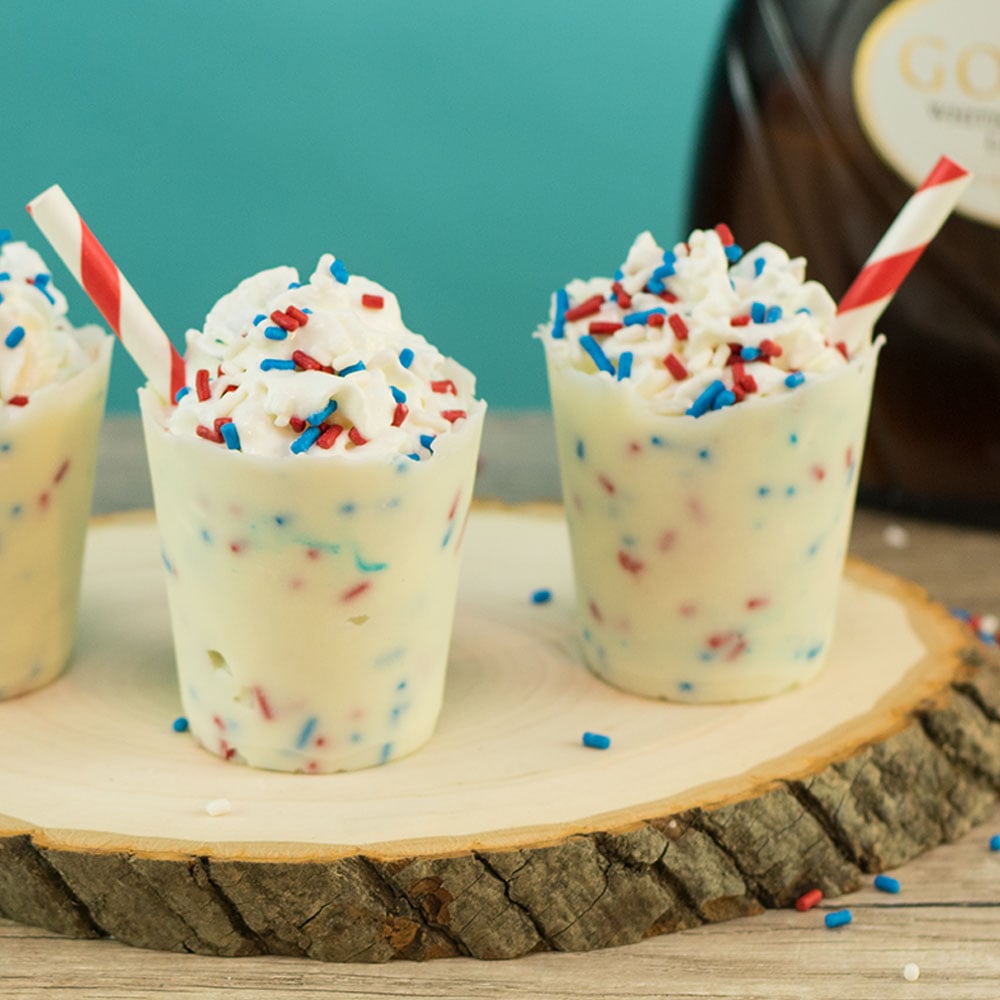
4th July Edible Shot Glasses
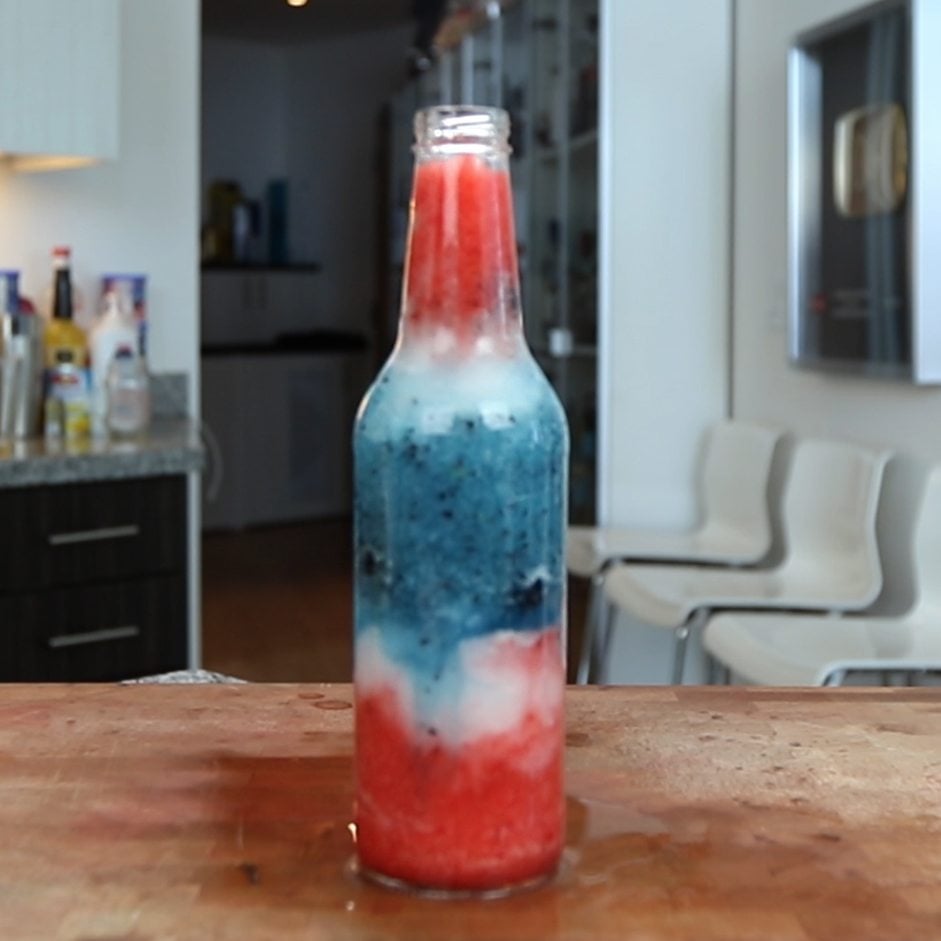
4th July In A Bottle
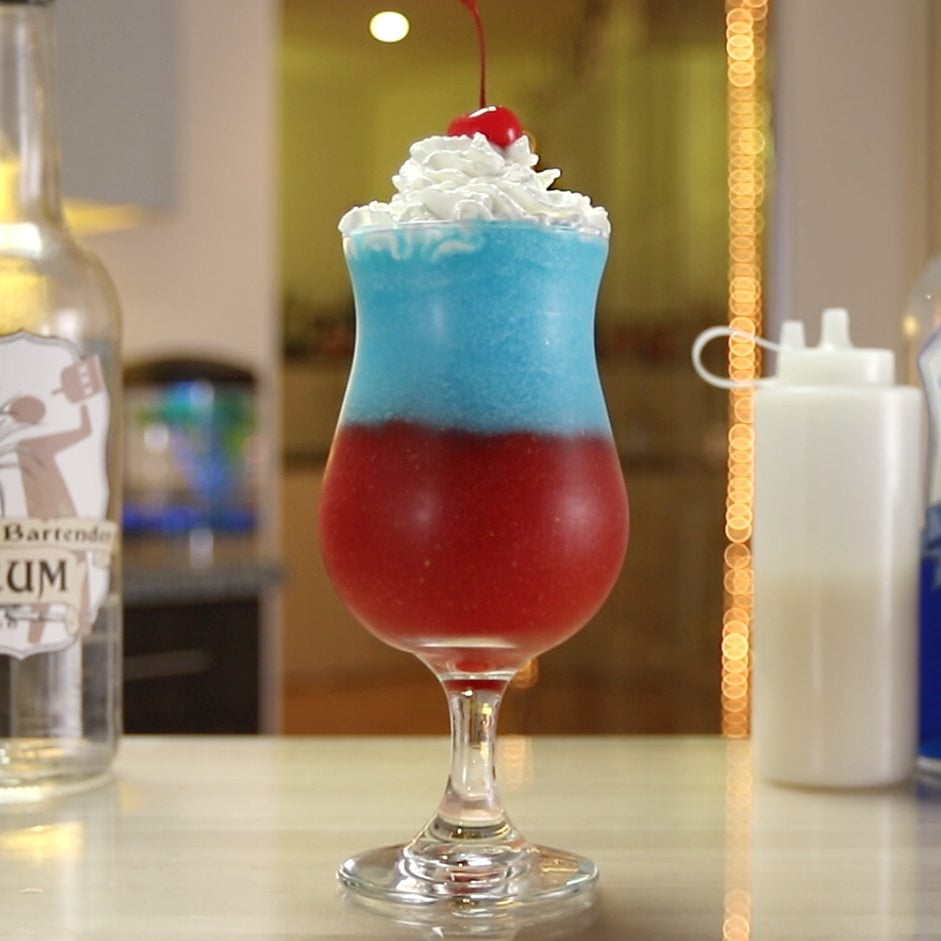
All American Daiquiri


